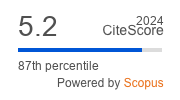Article | Open Access
It Depends…Different Direct Democratic Instruments and Equality in Europe from 1990 to 2015
| Views: | 3828 | | | Downloads: | 1758 |
Abstract: Despite the popularity of direct democracy in recent decades, research on the actual output effects of popular decision-making is rare. This is especially true with regard to equality, where there are at least three major research gaps: 1) a lack of cross-national analyses; 2) insufficient investigation of the differential effects of different direct democratic instruments on equality; and 3) a failure to distinguish between different aspects of equality, i.e., socioeconomic, legal and political equality. This article takes a first step to tackle these shortcomings by looking at all national referenda in European democracies between 1990 and 2015, differentiating between mandatory, bottom-up and top-down referenda. We find that a large majority of successful direct democratic bills—regardless of which instrument is employed—are not related to equality issues. Of the remaining ones, there are generally more successful pro-equality bills than contra-equality ones, but the differences are rather marginal. Mandatory referenda tend to produce pro-equality outputs, but no clear patterns emerge for bottom-up and top-down referenda. Our results offer interesting, preliminary insights to the current debate on direct democracy, pointing to the conclusion that popular decision-making via any type of direct democratic instrument is neither curse nor blessing with regard to equality. Instead, it is necessary to look at other factors such as context conditions or possible indirect effects in order to get a clearer picture of the impacts of direct democracy on equality.
Keywords: direct democracy; direct democratic instruments; equality; Europe
Published:
© Brigitte Geißel, Anna Krämling, Lars Paulus. This is an open access article distributed under the terms of the Creative Commons Attribution 4.0 license (http://creativecommons.org/licenses/by/4.0), which permits any use, distribution, and reproduction of the work without further permission provided the original author(s) and source are credited.


